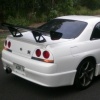2009 F1 Season
Announcements
-
Similar Content
-
Latest Posts
-
FWIW, if the question was about the undertray for an HY51 Fuga / V37 Skyline I do actually have some knowledge....having ripped mine off crossing a weir that was deeper than I expected
-
Good question. I thought there might be some knowledgeable people on here. Apparently, I thought wrong.
-
By Murray_Calavera · Posted
Called it! Just wondering, why did you pick this site to ask for help and not like a local facebook group for Subis?






Recommended Posts
Create an account or sign in to comment
You need to be a member in order to leave a comment
Create an account
Sign up for a new account in our community. It's easy!
Register a new accountSign in
Already have an account? Sign in here.
Sign In Now